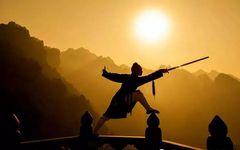1. Tai Chi Frame The Tai Chi frame we practice daily, regardless of the style, is merely a vessel for Tai Chi skills. Even when practicing any frame, if guided by Tai Chi principles, one can still cultivate Tai Chi skills! Generally, people practice Tai Chi for fitness, to enhance their adaptability in regular environments. However, those who strengthen their bodies are different; they train their adaptability and coordination in unconventional environments! Therefore, not only must one have a sound body, but also a strong will and an indomitable spirit! Walking with a relaxed mind is practicing the frame in an unstructured state. The frame we practice is done in a structured state. Practicing Tai Chi is about cultivating the Tai Chi mindset, focusing on the adaptability and coordination of every part of the body. It creates conditions for oneself to navigate through chaotic situations. This allows one to maintain internal and external balance at all times. Thus, it is said: Tai Chi principles are to move and be still at will, to flow with the circumstances, to walk with the back, to advance and retreat, to distinguish between emptiness and fullness; to rise and fall, to balance according to the situation, to follow and release, to guard my emptiness and spirit, to be accommodating and forget desires, the great way is formless. 2. Walking the Frame When walking the Tai Chi frame, to find various adaptabilities and coordinations, one must break down a set of movements into countless points, ensuring that there is a corresponding balance at each point. This requires us to experience through gentle and slow movements, and once mastered, harmony in adaptability and coordination will manifest everywhere, maintaining an objective balance internally and externally. This is: moving and being still at will, balancing according to the situation.
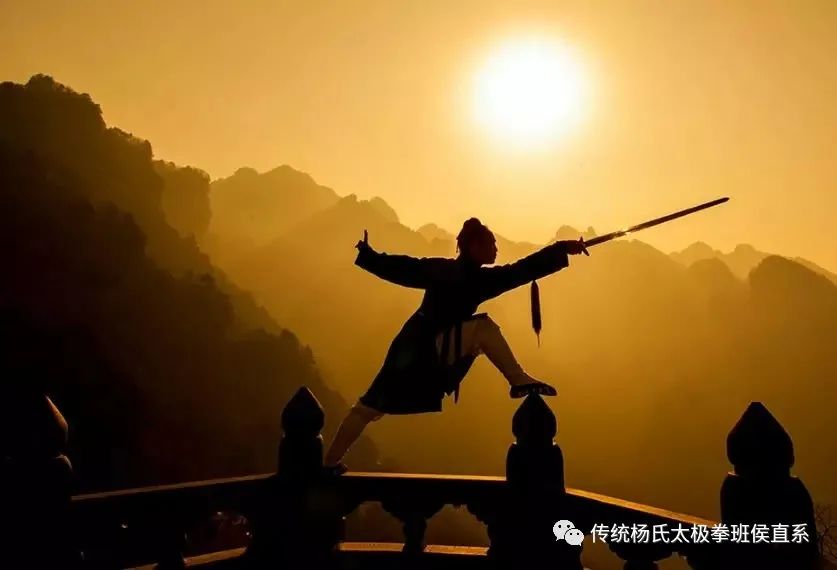
Practicing Tai Chi to strengthen the body: Practicing the Tai Chi frame, every move and posture is comprehensive; understanding Yin and Yang to nurture the spirit: learning theoretical knowledge, comprehending the laws of change between emptiness and fullness, meticulously and diligently;
Embracing the world to recognize the greater: practicing Tai Chi push hands, accommodating the opponent, adapting to changes in circumstances, remaining calm; understanding true softness to know hardness: true Tai Chi skills are about intuitively grasping the properties of water, adapting to situations, and being at ease. True softness is like water; every move flows naturally, allowing oneself to navigate through any state, with every part of the body adapting accordingly. This embodies the adaptability, inclusiveness, and formlessness of water. As for hardness, simply put, it is the impact of water; when Tai Chi is practiced to proficiency, it can generate waves of energy, and using water waves as a metaphor is most appropriate.
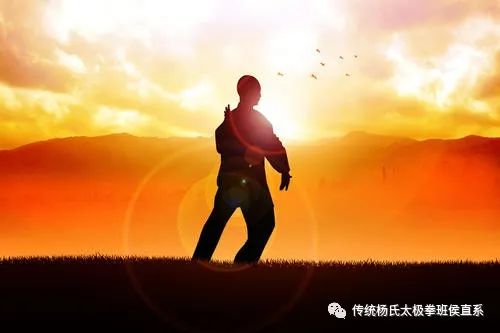
Different goals in practicing Tai Chi lead to different training methods, and the practitioner’s experiences will vary! Speaking of goals, there are three: fitness, performance, and strengthening the body.
For fitness practitioners, the main focus is on enhancing the body’s adaptability, with the primary feeling being “doing as one wishes, feeling relaxed.” For performers, the content of training is merely increased coordination, enhancing the aesthetic of the posture with standardized movements; at this time, the feeling of “feeling relaxed” often arises. As for those who strengthen their bodies, they train adaptability in adversity! Not only must they strengthen a sound body, but also cultivate a strong will and an indomitable spirit! They train coordination in any state, maintaining internal and external balance! Such feelings will be present at all times! Nowadays, many practitioners lose their way due to the analysis of strength, so a brief discussion on this is warranted. Strength has direction and magnitude, which is singular. As for Jin (劲), it is strength under the guidance of wisdom, a living and changing force. Jin can vary in direction, magnitude, and point, which is complex; it specifically follows the principles of Yin and Yang, the changes between emptiness and fullness. Understanding this variability in Tai Chi can also be seen as grasping the essence of Jin. Pursuing this understanding and practicing diligently will surely yield results! The carrier of Jin is stability, and the twelve other forms in the Tai Chi Thirteen Postures (太极十三势) are its methods. “The carrier of Jin is stability” means that in the Tai Chi Thirteen Postures, “Peng (掤), Lu (捋), Ji (挤), An (按), Cai (采), Lie (冽), Zhou (肘), Kao (靠), Jin (进), Tui (退), Gu (顾), Pan (盼), Zhong Ding (中定)”; Peng Jin is the root, without Peng Jin, other Jin methods cannot arise; Zhong Ding Jin is the carrier of all Jin methods, manifesting in balance and stability; when we walk the frame, we pursue balance and stability in movement. 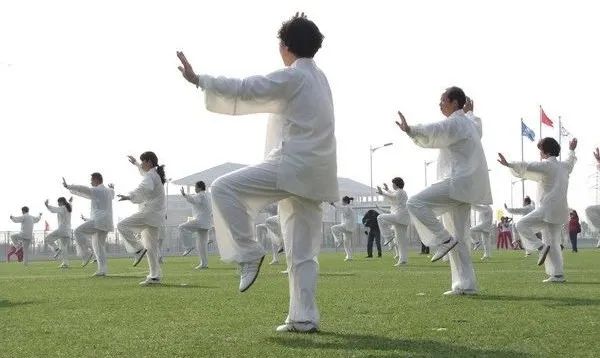
The Great Tai Chi Explained: The universe is one great Tai Chi, and the human body is a small Tai Chi. The human body embodies the Tai Chi form. Therefore, everyone can practice Tai Chi. The spirit is originally there, but it needs to be refined; the human body is like a machine, if not maintained for a long time, it will rust, leading to stagnation of Qi and blood, resulting in various ailments. Therefore, for those who wish to strengthen their bodies, practicing Tai Chi is most suitable. The method of practicing Tai Chi is to use the mind to guide Qi, without using crude force, allowing nature to take its course, avoiding the pain of bending bones and the labor of skin abrasion. How can one have strength without using force? In Tai Chi practice, one sinks the shoulders and drops the elbows, with Qi sinking to the Dantian (丹田), which is the central mechanism of Qi, from which it connects to the four limbs and hundreds of bones, circulating throughout the body. When the mind reaches, the Qi follows; when practiced to a high level, the strength becomes limitless, and the effects are remarkable.
Discussing Tai Chi for Health: The first posture of the Tai Chi frame is the preparatory stance, where the hands hang naturally and the body stands upright, fully relaxed, letting go of thoughts. Forgetting the burdens of work, as if putting down a thousand heavy loads. With a calm heart, the mind also gets rest; what benefits arise from this? When raising hands and feet, beginning to practice the form, every movement is interconnected, with no joint left unrelaxed, and every sinew and meridian is engaged. The first posture, “Grasp the Sparrow’s Tail (揽雀尾),” contains the four methods of Peng, Lu, Ji, and An. When turning and stepping to the right, extending the right hand forward, it is “Grasp the Sparrow’s Tail.” Never leaving the relaxed shoulders and dropped elbows, with Qi sinking to the Dantian, the tailbone aligned, and the spirit lifted. The above sentences are easy to understand, but the skill is difficult. Many comrades can explain the literal meaning, but their skills may not match the literal meaning. It is especially concerning to be rigid and unyielding, which can lead to misunderstanding.
If we speak of the actual skill, for example, in the fixed stance of “Grasp the Sparrow’s Tail,” during the stepping, the legs differentiate between emptiness and fullness. The stepping method consists of eight steps, with relaxed shoulders and dropped elbows, and the shoulders should not exert force. The elbows do not drop by force. The elbow tips should slightly turn downwards. Qi sinks to the Dantian, not by inflating the lower abdomen. Just a little attention below the navel is sufficient. There is also a concern about misunderstanding the principle of “covering the chest and pulling the back,” leading to a hunched back. Therefore, there is the principle of aligning the tailbone to correct this. Covering the chest means slightly relaxing the chest, while the back naturally lifts. The chest should not only be slightly relaxed but also have a sense of closure. Practicing Tai Chi can help treat lung diseases; the key lies here. Practicing the form should be slow and even; fearing that it may lack excitement, there is also the need for a lifted spirit to assist. This ensures that practitioners of Tai Chi are well-rounded and without flaws. Master Zhang Sanfeng dedicated himself to the health and happiness of humanity, which can be said to be his utmost effort.
Learning Tai Chi Basics: Tai Chi is fundamentally an internal skill of Wudang. Anyone wishing to strengthen their body, regardless of age, can learn. Children over eight years old and seniors over sixty can learn. Those with weak constitutions can also learn. After practicing for a few months, one will gradually feel stronger. Children are at a critical period of development. Practicing should be expansive (i.e., stretching hands and feet to extend longer is good). However, for youths under twenty, practicing does not require covering the chest, as their bone structure has not yet fully developed and is in a period of change. It is advisable to maintain an upright posture. After twenty, one can add the covering of the chest.
The Thirteen Postures can be learned in three months. After a year of practice, one can become proficient, and after three years of practice, one can master it. The more one practices, the more refined it becomes. However, without true transmission, practicing Tai Chi will only lead to slight strengthening of the body. After ten years of practice, one may still be confused. How can one know the subtleties and mysteries of the art and the application of perception? If one receives true transmission and practices accordingly, achieving the body of a Vajra (金刚) or Arhat (罗汉) is not difficult. Not only will the body be strong, but the ability for self-defense will also be inherent. Practicing in the morning and evening is most suitable. After meals, rest for half an hour or an hour before exercising.
If one has a weak constitution, practice according to one’s ability. After taking Western or Chinese medicine or receiving injections, one should not exercise immediately. Rest is necessary until recovery before continuing practice. Practicing Tai Chi can be done twice or three times in the morning and evening. In summer, during hot weather, one must avoid bathing in cold water to prevent closing the heat; a little rest is fine. In winter, dress quickly after practicing to avoid catching a chill. After practice, do not sit immediately. Walking for five minutes helps harmonize the blood vessels. During practice, one must calm the mind and cease all thoughts, with no distractions, focusing solely on practicing Tai Chi. The methods of Tai Chi in combat are very subtle, not that they cannot be used. It is just that many practitioners today focus on superficial practice and are unwilling to delve deeper. They do not seek high-level teachers or beneficial friends. If one claims that Tai Chi cannot be practically applied, how can one blame the instructors for not teaching? This art is born from the Dao; beginners can learn one or two postures daily, without rushing. The initial learning may be slightly difficult, but after a month, once familiar with the postures, it becomes easier. Comrades often feel that after one or two months of initial learning, the form is very good. After learning for three or four months, they feel it is not as good as before, leading to frustration. This is precisely a sign of progress. If there is no progress, one cannot discern the quality of the form. Beginners must go through this stage and should not lose motivation because of it.
Practicing Tai Chi Procedures: In the initial stages of learning, focus less on theory. Just listen to the teacher’s instructions, primarily not using force. The entire body should be relaxed and soft. Practice one or two postures daily, without overdoing it. After three months, one can learn the complete set. After another three months, practice and correct the postures. When the postures are correct about eighty to ninety percent, it can serve as personal fitness exercise, as if truly exercising for health. If one wishes to advance further, after another three months, learn the movement routes and the meaning of Tai Chi. After another three months, learn the energy and Jin of Tai Chi. Begin to glimpse the pathways of Tai Chi. It is expected that after a year, without a skilled teacher’s guidance, one cannot achieve the goal. After six months of practice, one can start learning the basics of push hands. The first month should also be without force, first learning to stick and circle with a partner. The second month, learn the four methods of Peng, Lu, Ji, and An. The third month, learn to neutralize Jin, starting with elbow neutralization, then waist neutralization, and then shoulder neutralization, ensuring smoothness and flexibility. Then learn to adapt and respond with the whole body. After another three months, learn the applications of Peng, Lu, Ji, and An. Then learn the methods of Jin in combat. The above is a one-year plan. After that, if time permits, one can also learn Tai Chi sword.
If one is willing to put in the effort, adding another six months, totaling one and a half years, one can become proficient in Tai Chi, sword, and push hands, gaining some skills and health. This can be considered a small level. Continuing to practice for another year and a half, during this period, one can learn Tai Chi spear and various techniques outside of push hands. During this time, intensify practical training for about three years. Proficiency in Tai Chi, sword, and spear can lead to health and self-defense. With the skills of Tai Chi, one can wield short weapons like swords and long weapons like spears, providing enough practice for a lifetime. This can be called the intermediate level. After three years, the practice of Tai Chi will differ; one must concentrate and seek high-level teachers for guidance, refining essence into Qi, refining Qi into spirit, and returning spirit to emptiness, entering the advanced level. Tai Chi is divided into three levels: push hands in large circles is the first level, learning to neutralize in small circles is the intermediate level, and combining neutralization and striking without circles is the advanced level. Within the formless, there is form; focusing on striking without neutralization, and striking while neutralizing. This is the large circle encompassing the small circle, and the small circle transforming into the formless. This is the principle of Wuji (无极) giving birth to Tai Chi, Yin and Yang, the Eight Trigrams, and the Five Elements. Countless changes return to one. Achieving the advanced level makes one invincible in the world. The duration cannot be predetermined; it depends on individual talent and effort. Learning the art has no limits; however, those who are willing to put in the effort will surely refine their skills day by day. Practitioners must patiently practice Tai Chi. Reaching the state of spiritual transformation is not a difficult task.
Explanation of Emptiness and Fullness in Tai Chi: When ordinary people practice, the left leg is full while the right leg is empty. If the right leg is full, the left leg becomes empty. This is the concept of emptiness and fullness. To further explain, if the front leg is full, the back leg is empty, that is incorrect. Those who do not believe can test it; for example, when punching someone, pushing someone, the front leg is full while the back leg is empty. Consider whether you can stand firmly and exert force. Reflect on whether there is effective force in pushing someone. Upon careful thought, one will know. Close practitioners often view Tai Chi as mere exercise and overlook its martial art aspect. While it is indeed exercise, every method is based on its application, so practicing Tai Chi requires learning the correct postures and practicing according to the intended application to attain the true skill of Tai Chi.
The terms emptiness and fullness, as indicated by predecessors, do not have a simple meaning. Here is a brief explanation. If one wishes to step forward with the right foot, the intention is to slightly shift the center of gravity to the left leg, making it full. Once the weight is shifted from the right leg, it becomes empty, allowing for easy movement and stepping, with the size of the step depending on the individual. If both feet are stable, both are full. If the left foot wishes to step forward, the right foot’s toe turns outward, shifting the center of gravity to the right leg. At this point, the distinction between emptiness and fullness begins. The right leg is full, and the left foot is light. In summary, when standing still, the feet cannot be empty; one must distinguish between emptiness and fullness. Most of the time, the front foot can be empty while the back foot is full. The effort must start from the root (i.e., the heel of the foot).
When using advancing steps, the changes between the two legs’ emptiness and fullness can be faster than weaving. Both feet can be empty or full. The empty one can exert five parts of strength, while the full one can exert eight or nine parts. If there is no effort at all, the feet will not obey one’s command. If one exerts full strength, the movement will be uncoordinated.
Explanation of Tai Chi Bow Stance and Sitting Stance: (Bow Stance) refers to the front leg bending forward. (Sitting Stance) refers to the back leg sitting back, with the knee bent low. The application of bow and sitting stances is akin to the northern farmer’s irrigation method (i.e., watering the fields) or the ordinary sawing method, or like the southern boatman’s rowing style. In summary, they all utilize the dynamic of following the upper and lower movements.
Body Mechanics: Lift the spirit, maintain a light and agile top, cover the chest and pull the back, relax the shoulders and drop the elbows, sink the Qi to the Dantian, keep the hands level with the shoulders, relax the hips and align the knees, lift the tailbone, and align the tailbone, integrating the internal and external.
Practice Methods: Do not forcefully exert strength, use the mind to guide Qi, step like a cat, follow the upper and lower movements, breathe naturally, connect in a line, change at the waist, let Qi flow through the limbs, clearly distinguish between emptiness and fullness, and turn smoothly.
Proverbs for Practicing Tai Chi: Follow the rules, become familiar with the rules, transform the rules, and embody the spirit of the rules, without departing from the rules. In the beginning, practice slowly; gradually, practice evenly. Once proficient, move as one wishes. The movements and stillness, emptiness and fullness, Yin and Yang opening and closing, various energies and postures must be expressed. Within the round, there is square; within the square, there is round. The strength may seem broken, but the intention remains unbroken. It is agile and mysterious, reaching the peak. Practicing Tai Chi to this extent is beyond comprehension.

If there are any copyright issues, please contact the original author through the backend.The articles published are for learning and reference only. Please practice under the guidance of a professional teacher.
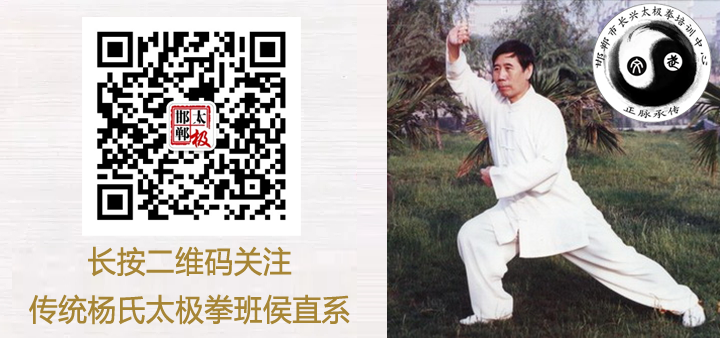
Official Website: http://www.yunshuiwang.com



